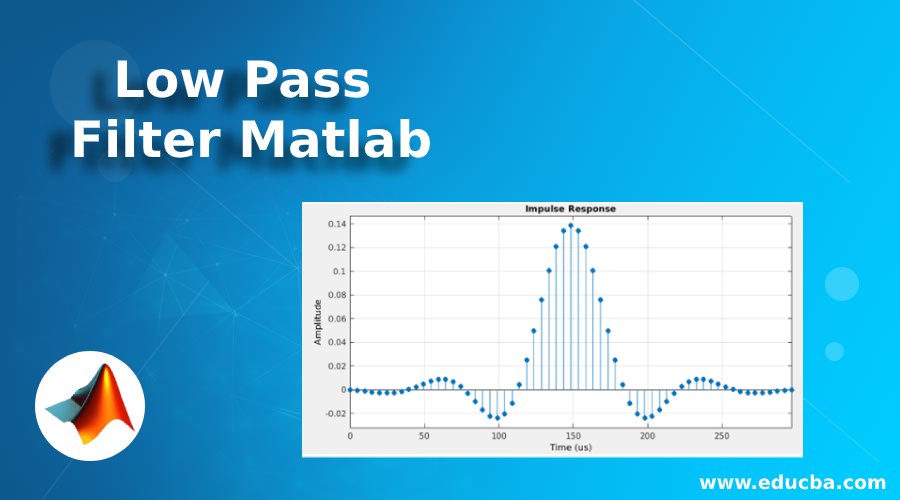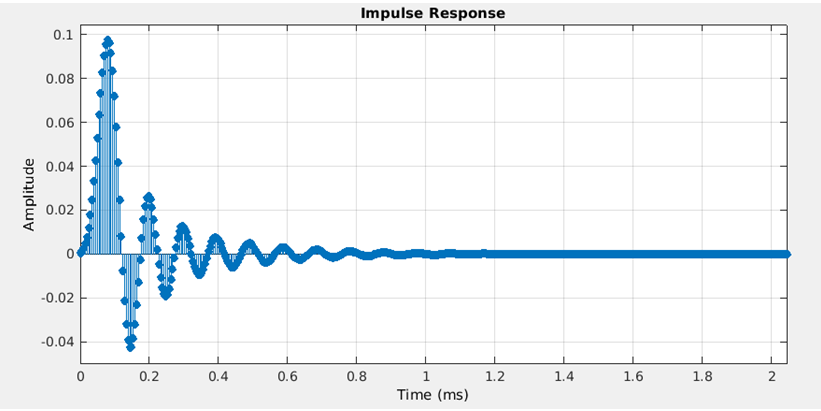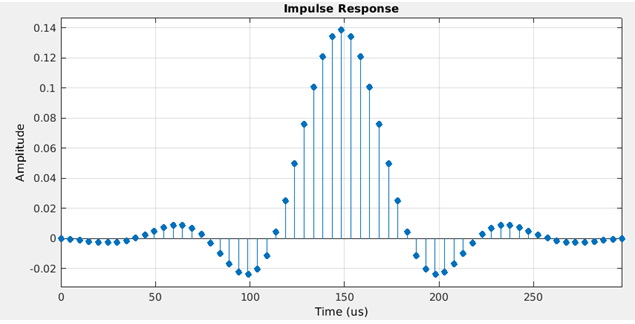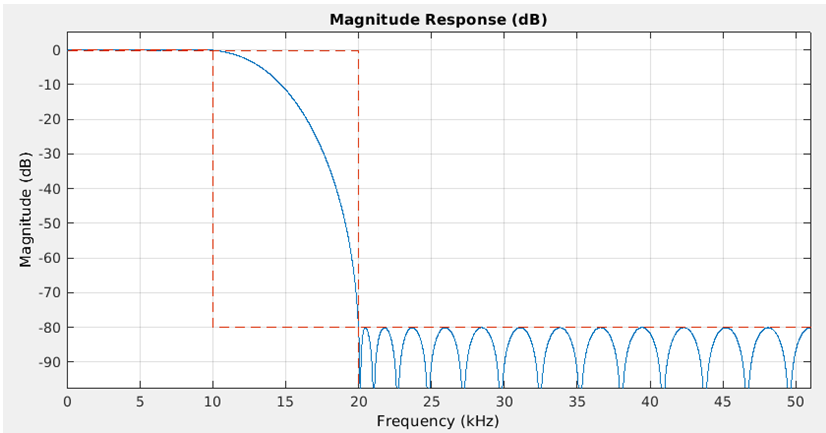How To Create Low Pass Filter In Matlab

Introduction to Low Pass Filter in Matlab
MATLAB is a programming surroundings that is interactive and is used in scientific calculating. Information technology is extensively used in a lot of technical fields where problem solving, data assay, algorithm evolution, and experimentation is required. The software which is discipline specific is extensively written using MATLAB. In this article, we will report how to create a low pass filter in MATLAB. MATLAB provides united states with 'dp.LowpassFilter' control for the purpose of using low pass filter.
Earlier we start learning how low pass filtering works in MATLAB, let united states of america refresh our agreement of what low pass filter is and why we need it. We utilise low-pass filters to cut off loftier frequency signals. As the name suggests these filters provide easy passage to signals with a frequency lower than a threshold value but don't allow frequencies college than this cut-off. Depression pass filters are mainly of 2 types:
- Inductive low-pass filters
- Capacitive depression-laissez passer filters
Syntax of Low Pass Filter Matlab
Let united states at present understand the syntax of low pass filters in MATLAB:
Syntax:
LowPass = dsp.LowpassFilter
Description:
LowPass = dsp.LowpassFilter volition return a depression pass filter of minimum lodge and default filter backdrop. If dsp.LowpassFilter is called with default backdrop, the following are some default values by which the input point will be filtered by the low pass filter:
- passband frequency will be 8 kHz
- stopband frequency will be 12 kHz
- passband ripple will be 0.1 dB
- stopband attenuation will be eighty dB.
Earlier we proceed, we demand to understand ii very important concepts related to low-laissez passer filters:
- IIR
- FIR
IIR (Space impulse response): These filters provide an infinite impulse response. In elementary words, the impulse response of IIR never becomes equal to goose egg, but simply approaches it.
FIR (Finite impulse response): These filters have finite impulse response. In uncomplicated words, the response of impulse using FIR stays only for finite samples. The impulse response volition never past greater or less than the set samples.
How Low Pass Filter is Implemented in Matlab?
Let us at present empathize how low pass filter is implemented in MATLAB. Let us beginning create an impulse response and use filter type as IIR filter and proceed the main filter equally depression pass filter
Example #1
Syntax:
SR = twenty.2e4
[Defining the Sample Rate]
FType = 'IIR';
[Defining the Filter Type as IIR]
Fp = 10e3;
[Defining the Pass band frequency]
Fs = 20e3;
[Defining the Stop band frequency]
PBRipple = 0.2;
[Defining the Pass band ripple]
SBAtten = 70;
[Defining the Stop ring Attenuation]
LPFiir = dsp.LowpassFilter('SampleRate', SR, …
'FilterType', FType, …
'PassbandFrequency',Fp, …
'StopbandFrequency',Fs, …
'PassbandRipple', PBRipple, …
'StopbandAttenuation', SBAtten);
[Creating the low laissez passer filter using 'dsp.LowpassFilter control and passing the required backdrop]
fvtool(LPFiir,'Assay','impulse')
[Using filter visualization tool to describe the output impulse]
Code:
SR = 20.2e4
FType = 'IIR';
Fp = 10e3;
Fs = 20e3;
PBRipple = 0.two;
SBAtten = 70;
LPFiir = dsp.LowpassFilter('SampleRate', SR, ...
'FilterType', FType, ...
'PassbandFrequency',Fp, ...
'StopbandFrequency',Fs, ...
'PassbandRipple', PBRipple, ...
'StopbandAttenuation', SBAtten);
fvtool(LPFiir,'Analysis','impulse')
Output:

As we can come across in the output, we have space impulse response which merely approaches to zero simply never actually becomes zero.
Next, we volition acquire how the lawmaking for low pass filter with filter type FIR (Fixed impulse response) looks like in MATLAB.
Case #2
Syntax:
SR = xx.2e4
[Defining the Sample Rate]
FType = 'FIR';
[Defining the Filter Type as FIR]
Fp = 10e3;
[Defining the Pass band frequency]
Fs = 20e3;
[Defining the Stop band frequency]
PBRipple = 0.ii;
[Defining the Pass band ripple]
SBAtten = 70;
[Defining the Terminate ring Attenuation]
LPFfir = dsp.LowpassFilter('SampleRate', SR, …
'FilterType', FType, …
'PassbandFrequency',Fp, …
'StopbandFrequency',Fs, …
'PassbandRipple', PBRipple, …
'StopbandAttenuation', SBAtten);
[Creating the low pass filter using 'dsp.LowpassFilter command and passing the required properties]
fvtool(LPFfir, 'Analysis','impulse')
[Using filter visualization tool to draw the output impulse]
Lawmaking:
SR = 20.2e4
FType = 'FIR';
Fp = 10e3;
Fs = 20e3;
PBRipple = 0.two;
SBAtten = 70;
LPFfir = dsp.LowpassFilter('SampleRate', SR, ...
'FilterType', FType, ...
'PassbandFrequency',Fp, ...
'StopbandFrequency',Fs, ...
'PassbandRipple', PBRipple, ...
'StopbandAttenuation', SBAtten);
fvtool(LPFfir, 'Assay','impulse')
Output:

As we tin run across in the output, there are only a finite set of responses as expected by u.s..
In some cases, while using low pass filters, we might demand magnitude responses related to the FIR and IIR filter types. Allow u.s. learn how to get these magnitude responses in MATLAB.
Example #3
Syntax:
The lawmaking for creating magnitude response is like what nosotros have already learned, with small changes. Let us create a different impulse response for visualizing the magnitude response:
SR = 10.2e4
[Defining the Sample Rate]
FType = 'FIR';
[Defining the Filter Type equally FIR]
Fp = 10e3;
[Defining the Laissez passer band frequency]
Fs = 20e3;
[Defining the Stop band frequency]
PBRipple = 0.two;
[Defining the Pass band ripple]
SBAtten = 80;
[Defining the Cease ring Attenuation]
LPFfir = dsp.LowpassFilter ('SampleRate', SR, …
'FilterType',FType, …
'PassbandFrequency', Fp, …
'StopbandFrequency', Fs, …
'PassbandRipple', PBRipple, …
'StopbandAttenuation', SBAtten);
[Creating the low pass filter using 'dsp.LowpassFilter command and passing the required properties]
fvtool(LPFfir)
[Using filter visualization tool to describe the output impulse. Notation that, we accept just passed the LPFfir as an statement to get the magnitude]
Code:
SR = 10.2e4
FType = 'FIR';
Fp = 10e3;
Fs = 20e3;
PBRipple = 0.ii;
SBAtten = fourscore;
LPFfir = dsp.LowpassFilter ('SampleRate', SR, ...
'FilterType',FType, ...
'PassbandFrequency', Fp, ...
'StopbandFrequency', Fs, ...
'PassbandRipple', PBRipple, ...
'StopbandAttenuation', SBAtten);
fvtool(LPFfir)
Output:

Recommended Articles
This is a guide to Low Laissez passer Filter Matlab. Hither we as well discuss the introduction and syntax of depression pass filter Matlab forth with how low pass filter is implemented in Matlab. Y'all may as well have a look at the following articles to acquire more –
- Factorial in Matlab
- Matlab loglog()
- Matlab reef
- MATLAB cylinder()
How To Create Low Pass Filter In Matlab,
Source: https://www.educba.com/low-pass-filter-matlab/
Posted by: owenswhearour.blogspot.com


0 Response to "How To Create Low Pass Filter In Matlab"
Post a Comment